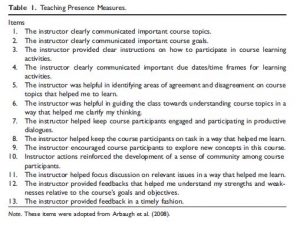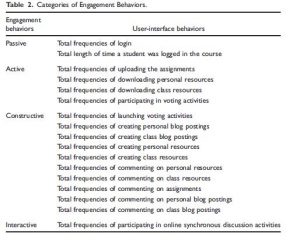Description of Action Research, A Qualitative study and An Examination of both with Respect to the Researcher, the Research, the Researched and the Reader.

“Shenandoah River State Park”by vastateparksstaff is licensed under CC BY 2.0
“Two roads diverged in a yellow wood,
And sorry I could not travel both …” (R, Frost , Foundation, 2019)
Robert Frost captures the idea of choosing between two equally appealing paths in his infamous poem, “The Road not Taken”. Much like the decision before the reader as to which path to take, the researcher also has a choice as to which method to choose to conduct their research: quantitative or qualitative. The variety of research methods within these two categories that are available to a researcher can be overwhelming. One should determine what they are interested in, what their questions is, what resources they have available and then which research method would best fit the proposed question. The difficulty lays in the fact that sometimes there may be more than one “right” way to conduct the research.
One type of Qualitative Research a researcher may decide to use is that of “Action Research”. Action Research (AR) is described in detail by Mary McAteer as “ a methodology, a way of understanding and generating knowledge about the complexities of practice.” (McAteer, 2013, p.2) What does this mean? What does this look like? According to McAteer (2013), this type of research is moral, philosophical, messy, the merging of theory and practice and is also rigorous and grounded in research. McAteer (2013) illustrates the concept with images that show the cyclical nature of this type of research: Begin with a question, plan, act, observe and reflect back to the original question. The question may then be revised as needed, and the process begins again. In this way the research does not have a set end; it may carry on for a few cycles or for many. The research gathered from this process is authentic and intellectual (McAteer, 2013). The perceived weakness of AR by both the reader and researchers is the illusion of an unstructured method and concerns/critiques about the subjectivity of it (McAteer, 2013). McAteer, (2013) argues that this type of research, like all good research, is founded in theory and is systematic and rigorous. The underlying characteristics of AR and justification for the validity of it is clearly illustrated when McAteer (2013) states,
Having an appropriate mindset is as important as having a road map. A willingness to listen to the data with an open mind, to uncover, articulate and challenge assumption, to consistently question ‘the way it is’, and a preparedness for uncertainty, will be of more use than having a clear set of rules and procedures which could be applied with little understanding. (p.19)
In addition, McAteer (2013) makes a strong case for the validity of the subjectivity within this type of research when she mentions that,
It would be difficult to imagine them describing knowledge of and in the classroom as objective, value free and not strongly bound up in the individuals involved. How should we begin to understand our role as educators were we to dehumanize it.
(p.16)
These two quotes leave no doubt that this research can be valid and reliable, and therefore may be a good option for the researcher who likes to get a little “messy”.
Using the framework of one type of research, like AR to do a side by side comparison of other types of research may be helpful when critically analyzing the four R’s within research; The Research, The Researcher, The Researched and The Reader. The following study, a quantitative research project will be overviewed and then analyzed through this lens.
The Study
The research, “The Impact of Teaching Presence on Online Engagement Behaviors” (Zhang, Lin, Zhan, & Ren, 2016) , identified a gap in published literature with regards to online learners and engagement; this study was conducted as a means to shed some light on this phenomena and is particularly important given the increasing number of online students worldwide (Zhang et al., 2016). “The purpose of the study was to investigate whether teaching presence would impact online learners’ passive, active, constructive, and interactive engagement behaviors”(Zhang et al., 2016, p.887 ). The researchers asked the following research questions:
Research questions:
(All questions were controlled for the potential effects of the demographic variables)
- 1. Does teaching presence impact online learners’ passive engagement behaviors,?
- 2. Does teaching presence impact online learners’ active engagement behaviors,
- 3. Does teaching presence impact online learners’ constructive engagement?
- 4. Does teaching presence impact online learners’ interactive engagement behaviors?
(Zhang et al., 2016)
218 middle school English teachers volunteered to participate in the study (Zhang et al., 2016). Of those 17 were males, 201 were females, 89% were married and 87% had participated in a online professional development course before (Zhang et al., 2016). Participants were not rewarded or penalized for their participation or lack thereof (Zhang et al., 2016). The online facilitators designed the courses that included lesson plans, videos, slides and scholarly publications (Zhang et al., 2016). Participants were asked to participate in a variety of different tasks: “studying learning resources, completing assignments, contributing to blog postings, contributing to voting activities, and participating in online discussions”(Zhang et al., 2016 p.891). Students had from March until December of one calendar year to complete the course (Zhang et al., 2016).
Data was collected from online surveys (personal demographics questionnaire/teaching presence questionnaire) and from log files (Zhang et al., 2016). Log files were categorized as passive, active, constructive, and interactive; teaching presence was measured by 13 self-reported items, and the website tracked user-interface behaviors (Zhang et al., 2016). “Online students were asked to participate in a series of tasks: studying learning resources, completing assignments, contributing to blog posts, voting activities and participating in online discussions” (Zhang et al., 2016, p.891). Participants were given a personal website and access to a class website (Zhang et al., 2016). The online facilitators interacted with the students through moderating, posting content, comments, messages, encouraging participation and responding to questions(Zhang et al., 2016). Table one and two below show the “Teaching Presence Measures” and “Categories of Engagement Behaviors” (Zhang et al., 2016).


To determine the results, “regression analysis was used to assess the impact of teaching presence on active engagement behaviors” (Zhang et al., 2016 p 895). The findings showed that for behaviors classified as Passive (totals for login frequency/time) and Active (total frequencies uploading/downloading assignments and participation in voting activities), the impact of teaching presence on these engagement behaviors was not significant. For behavior’s classified as Constructive (launching voting activities, creating: blog posts, personal and class resources, and commenting in all areas) and Interactive (“participation in online synchronous discussion activities” (Zhang et al., 2016, p. 894)), “the positive impact of teaching presence on the interactive engagement behaviors was significant”(Zhang et al., 2016. p. 896).
The authors conclude that the results indicate, “that significant teaching presence can lead online adult learners to enhance communications in the learning environment and to generate a substantial number of outputs that are beyond the learning materials.”(Zhang et al., 2016, p.897 ) More specifically the results showed “that teaching presence had a positive impact on learners’ constructive and interactive engagement behaviors” (Zhang et al., 2016, p.887 ). While this study focused on adult learners who would likely be more motivated and self-disciplined than high school learners, it could be argued that, given the results, further teacher presence in high school online classes through increased communication with students, blogs and other forms of communication (eg forums) might also lead to an increase in engagement. What this study does not test is whether the increased engagement also results in an increase in learning. However, in the pertinent literature shared by Zhang et al., (2016) it was noted that,
“when students are interactively engaged in learning, they receive information, activate prior knowledge, integrate new information, and make inferences by having a mutual dialog with others. Therefore, learning outcomes associated with interaction is believed to be better than learning outcomes associated with construction, which is better than activeness, which is superior to passiveness”
( p.888).
Given this information, it may be beneficial for students to spend more time involved in interactive and constructive tasks. The results of this study show that teacher presence is instrumental in the attainment of this and that this may lead to resulting successes for students.
The 4 R’s
The Research
“The Impact of Teaching Presence on Online Engagement Behaviors” (Zhang et al., 2016) is designed as a quantitative study that is rigorous, controlled, data driven and based in theory. Relevant literature was reviewed, justification for the research was given, a research question and hypothesis were formed and data in the form of questionnaires and server files were collected. The nature of this study was artificial and controlled; however, the researchers did attempt an authentic task; that of an online professional development course. The research has a defined beginning and end and produces clear results. Discussion of this research alongside the framework of the AR method is one way to provide clarity to both forms with the potential to create further insights and ways of knowing. Within an AR framework, a researcher teaching online could create a study of this topic that would also be rigorous and set in theory; the difference would be in the execution. An AR researcher dealing with these same phenomena may attempt to respond to this observed phenomenon in their classroom or teaching with a question like: Will an increase in teacher presence improve student engagement in online courses? After developing a plan that may include the implementation of a blog or other forms of online media/tools that would increase teacher presence, the researcher would then observe, reflect and then the original question would be re-evaluated. This may lead to one or many more cycles as the researcher attempts to gain understanding and improve their practice. The final results for the AR research would be based on observation regarding student interaction in opposition to the numerical data obtained in the Zhang et al study (2016). It is possible within the context of this specific question that the theories developed through both types of research would be similar; however, the methodology to get there would be drastically different.
The Researcher
According to the author biography, the researchers involved in “The Impact of Teaching Presence on Online Engagement Behaviors” Huaihao Zhang, Lijia Lin, Yi Zhan and Youqun Ren, are all employed in the faculty of Education at East China Normal University. All show involvement with technology and teaching; all have direct interest in and knowledge of the design and facilitation of online courses (Zhang et al., 2016). Likely, as all have experiences within these environments, this led them to their research and ultimately to the research question. In this manner, this initial process may vary little from an AR researcher who has identified a similar need in his/her practice. The experiences, however, of conducting this research would be drastically different. On one side we have the AR researcher who is working closely with students and is continually reevaluating the original question and revising as needed. This researcher is connected emotionally, intellectually and is looking for ways to improve their practice. On the other side are researchers who are connected with the question and with the theory but are distanced from it through their research. These researchers, due to the nature of the research would also require funding and a specific skill set to run and analyze data. These researchers may be detached from the process they designed; they collect, define, quantify and describe the data. Many researchers may prefer one process over another based on these effects; some researchers enjoy the “messy” aspect of AR and the emotion of it, other researchers enjoy the distance, and, possibly the preciseness of Quantitative research studies.
The Researched
Those researched play a vital role as researchers often need participants in order to answer their research questions. All research participants are impacted in some respects, the effect may be almost negligible, but argument can be made that this is still an impact. In the (Zhang et al., 2016) research, the participants, at a glance, appear to be unaffected by the research. On closer examination regarding the nature of the study and the expectations for the participants, they may have been affected in the following ways: the loss of time to do other things due to their participation, the potential to gain new skills as part of the class and the potential to create a new community and connections due to the nature of the tasks and the runtime of the course. Did participants continue to communicate after course completion? What effect might this have? All of these impacts may be deemed neutral or positive impacts, but without questioning the participants, it would be hard to determine with certainty. If this study was created as an AR study, the students would be impacted, as they would be directly involved as part of the research. Students involved in AR research may be impacted by requests to try new things as the teacher explores ideas; students may feel obligated to participate or to complete tasks as a result of the teacher/student relationship or because peers are participating. Considerations of participation involvement in either case should be thoughtful and ethical.
The Reader
The reader may be another researcher, a student or someone interested in the topic presented. As a reader, personal bias and beliefs may impact thoughts and ideas throughout. Some readers may dismiss the Zhang et al, (2016) study as it is not “authentic”. Some may embrace the objectiveness of it. Some readers may dismiss AR research as it is biased, subjective and is lacking in practical application. Some may embrace the authenticity and insights it provides. As a reader all research should be viewed carefully for critical issues that arise within each methodology: eg. all research is subject to bias and error/ participants need careful consideration, reliable isn’t always reliable. Readers should disseminate research with this in mind. That being said, as a reader, both types of research presented can develop new meaning, new ideas, new questions and new application. The reader may see the benefits and learning that is created through both types of research and may apply knowledge from both to create new understandings.
The benefits and learning that come from different methodologies has led to the creation of mixed methodologies where both quantitative and qualitative methods are used to create a more complete understanding. This merging of methodologies, while challenging in nature, may ultimately be the most effective way to approach a problem. Perhaps Robert Frost was wrong; one can travel both paths.
References
Foundation, P. (2019, July 14). The Road Not Taken by Robert Frost [Text/html]. Retrieved July 14, 2019, from Poetry Foundation website: https://www.poetryfoundation.org/poems/44272/the-road-not-taken
McAteer, M. (2013). Action Research in Education. https://doi.org/10.4135/9781473913967
Zhang, H., Lin, L., Zhan, Y., & Ren, Y. (2016). The Impact of Teaching Presence on Online Engagement Behaviors. Journal of Educational Computing Research, 54(7), 887–900. https://doi.org/10.1177/0735633116648171